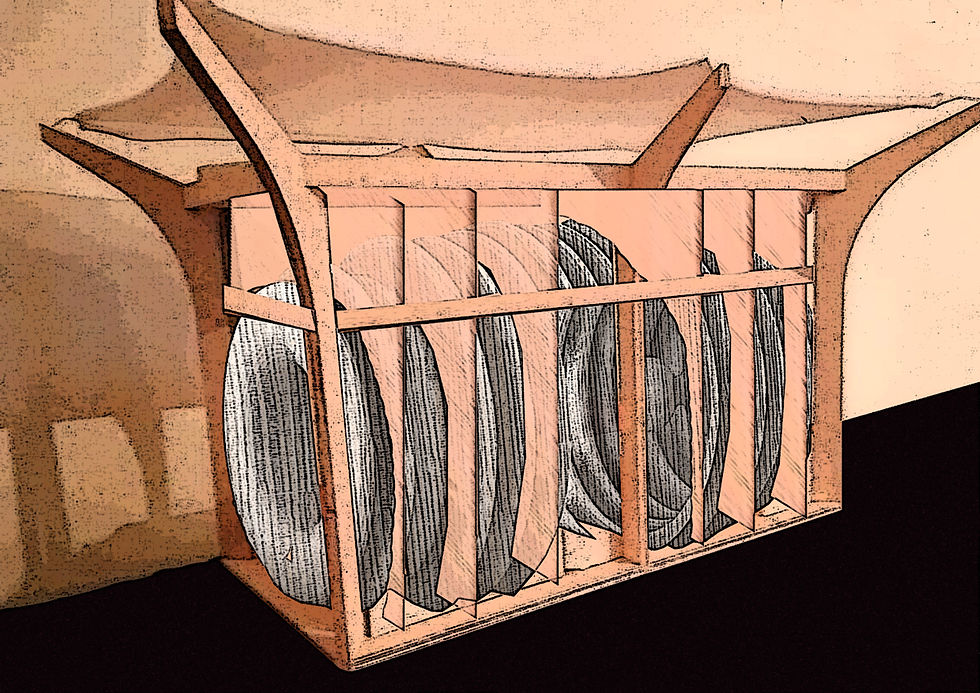Forming Perception
- Annamae Muldowney

- Oct 19, 2021
- 3 min read
Updated: Jan 14, 2022
Moving on from last semester I felt the most significant part of my research was into the impact spatial form can have on how the mind perceives a space even in the absence of sight.
This concept was strengthened by my studies into cymatics, where I generated cymatic forms from virtually vibrating plates at certain frequencies and then extruding the resulting shape in orbit . I was interested in these shapes as from reading the research of Shea Trahan, I had learned how these forms were used in ancient structures.

These ancient structures such as Newgrange, Ireland and the Hypogeum, Malta, had resonating chambers tuned to frequencies within the human vocal range.
Through brainwave scanning by MIT, it was proven that on entering these spaces, people would experience positive shifts in the brains pre frontal cortex.
From this research, I began to look at how this phenomena could be reinstated in modern architecture. I looked at this for two reasons:
As it could be used as a subconscious wayfinding tool. If you could alter how a person's brain perceives a space, you could curate this to aid people who cannot utilises visual cues.
In our post Covid19 world, many people have found themselves struggling with mental health. In the move back to the office space, a huge drive towards promoting wellbeing will be required. I wanted to look at how existing spaces in an office like liberty hall could be retrofitted to work as a meditative break out space. As these cymatic baths are hypothesized to promote wellness when tuned within our vocal range, these could be the answer.
How?

In order to prove my points above, I need to build a cymatic space at 1.1 and then test how if it actually works for my former points. As I cannot build within the confines of Liberty Hall, I needed some sort of space that required retrofit, to show how this could work
in an pre-existing space.

To do this, I decided to reuse another 1.1 model previously made in the university as a market stall prototype. I have currently began looking at how I can reuse the frame and disassemble/reassemble and cut the shelving to reuse this timber.

The construction of my cymatic form is now the difficult part. I originally thought that layering material would easily create my space. However from simulating the construction of this, I quickly learned that this would take a huge amount of material, thus being costly, laborious and wasteful.

As a result I have began to look at how it could be created as a thin shell with supporting ribs.
I have looked at research from Turkey, that looks at "Enhancing Flexibility of 2D Planar Materials By Applying Cut Patterns".. This research, such as their Miami Waves product, could allow me to increase the flexibility of timber to almost textile level while maintaining the precision of CNC cutting which would allow the waves to be prescribed to my cymatic needs.

This shell would however need to be supported, for this I looked at the boat making techniques used by Matthias Pliessnig to make furniture. Which is a series of ribs making the form paths, and then covered in steamed wood.

I began to think about how my structure might be made this way and how ribs could be connected to the frame. I am currently would on slicing these ribs with grasshopper, and trying to solved the pattern of scoring required for the shell.
New Sources:








Comments